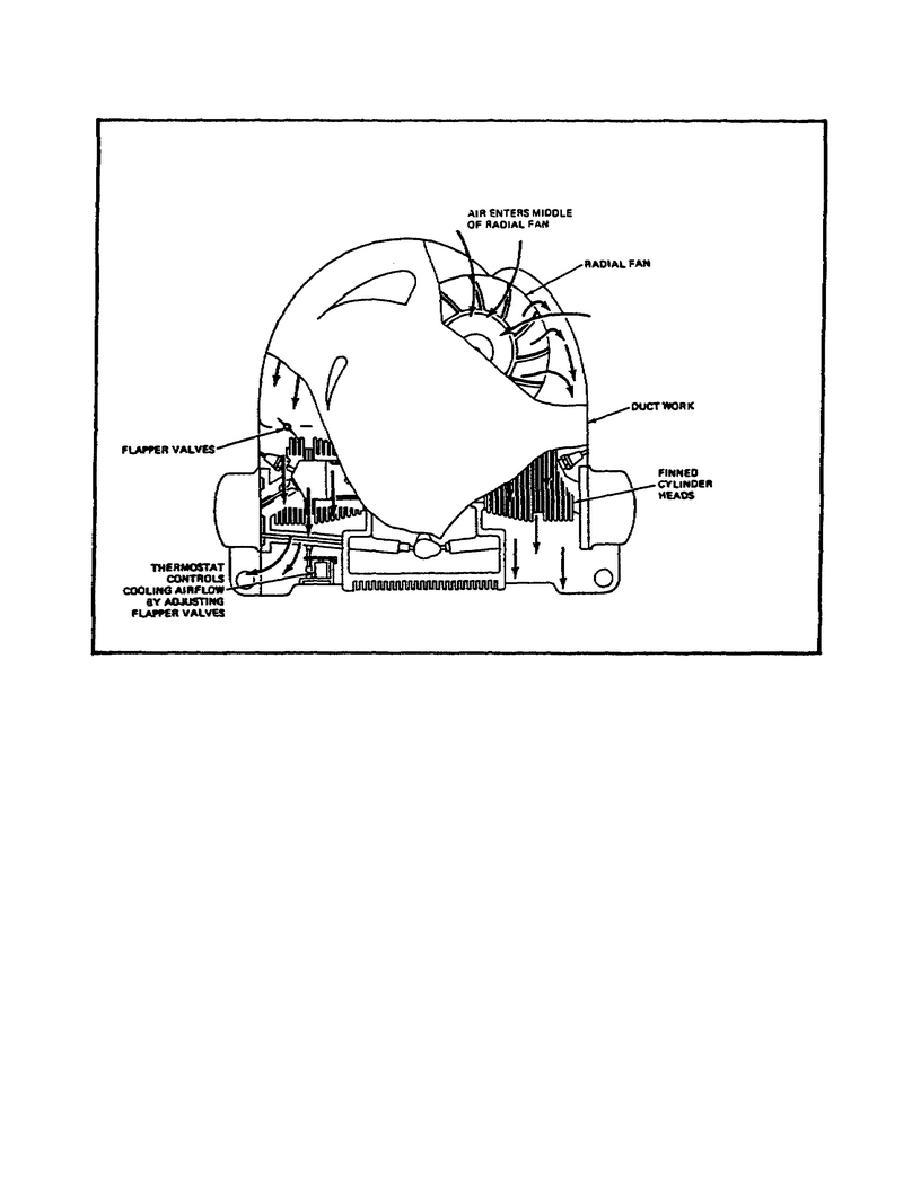
PRIN. OF INTERNAL COMBUSTION ENGINES - OD1619 LESSON 2/TASK 3
FIGURE 76.
AIR COOLING SYSTEM.
c. An air cooling system, like a liquid cooling system, must be controlled to
prevent
overcooling
of
the
engine.
To
accomplish
this,
a
system
of
thermostatically controlled doors are usually incorporated into the ducting.
The
thermostat is usually a bellows filled with butyl alcohol. As the thermostat heats
up, it opens the temperature control doors through linkage.
When the doors are
open, all of the cooling air is diverted through the engine cooling fins. When the
doors are closed, all cooling air bypasses the engine and no cooling takes place.
To maintain uniform engine temperature, the thermostat, in most cases, will
position the doors so that part of the cooling air bypasses and part of it cools.
The thermostat, in the event of failure, is designed to open the doors fully to
prevent overheating.
d. Because an air cooling system does not employ a liquid coolant, it is often
assumed that air alone acts as the cooling medium.
However, this is not true
because, as was pointed out in paragraph 2a on page 80, the fuel and the
lubrication systems also help in cooling the engine. The lubrication system of an
air-cooled
95




 Previous Page
Previous Page
